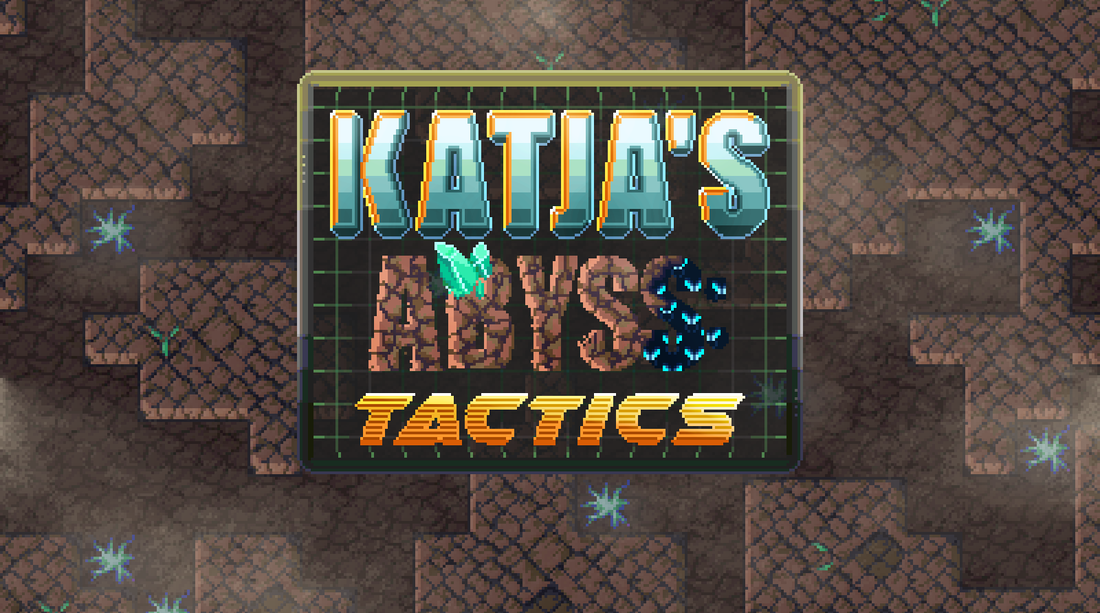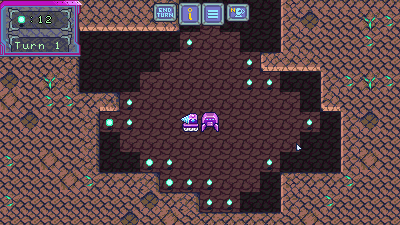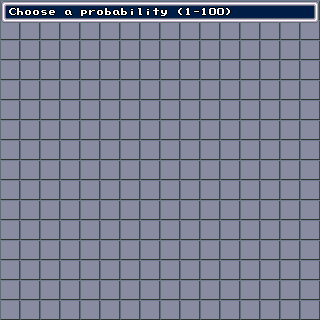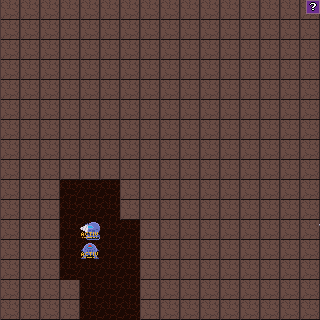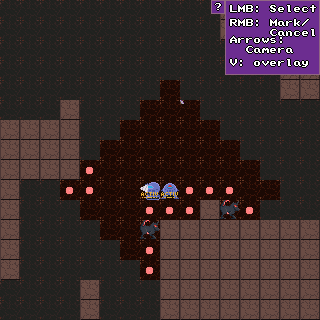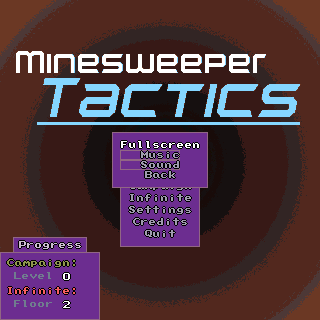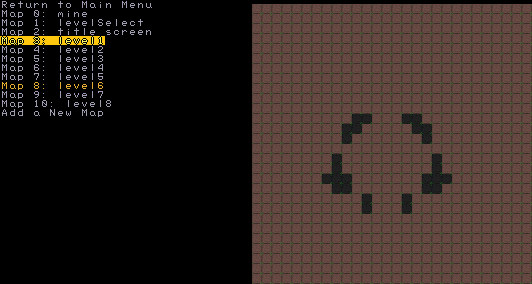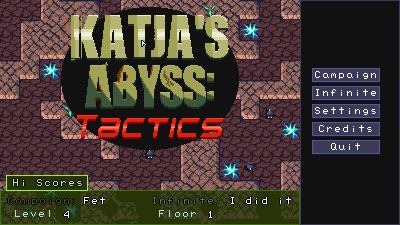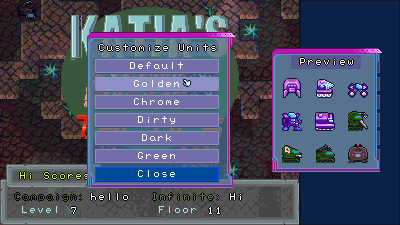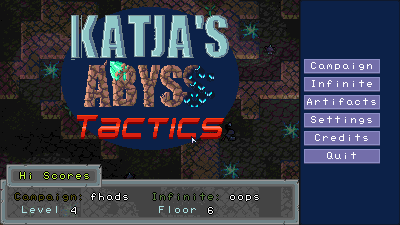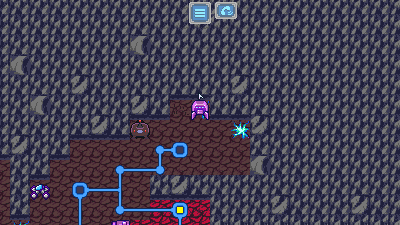|
Follow on Itch.io: https://kiefjerky.itch.io/katjas-abyss-tactics Katja's Abyss: Tactics is a strategy game using Minesweeper-style level design in tandem with tactical-rpg gameplay. Its conception began with me getting frustrated when I lost a game of Minesweeper. Frankly, the fact that in Minesweeper, guessing is sometimes necessary & one failure ends the game is poor design. It undermines the feeling of progression you get from chipping away at those walls. Layer 1: Core loopI began, of course, by recreating Minesweeper. Not very exciting, but here we have one arm of the core loop: marking potential mines & "digging" safe tiles. In order to invest the player as a more direct part of the experience, I wanted to place characters in the map. Instead of clicking to dig tiles, the player directs an avatar to do so.
To summarize, our core loop is something like this:
Layer 2: Secondary progressionThe game's title was originally less... original. The first big step into creating a secondary loop was adding two separate game modes. The first was Infinite Mode, where the player gets a randomly generated level as normal, and when they complete the level, they move onto the next. The highest floor the player reaches without losing–which happens when all your units die–is recorded and displayed on the title screen. This way, there's a high-score that reflects the player's progress. It's not much of a secondary loop, but at least the game recognizes the player's success. More significantly, the game now has a Campaign Mode, where a character guides the player through a story connected by levels of the game. There is a level-select area, which has a loop of its own: move to next level > complete level (core game loop) > read dialogue. The core loop is embedded in this loop, which is how I'm classifying one as "core" and therefore the level-selection as "secondary." The Campaign Mode quickly became the game's focus. Step by step, new features distinguished the campaign further from Infinite Mode. Each campaign level has an authored layout, rather than being generated completely randomly. Additionally, there were gimmicks to each one: in one stage you have to move your units to a target location, in another you have to survive for a certain number of turns. Layer 3: The good stuffI feel compelled to mention that at this point, the game got a facelift. With the work of some very talented artists, my placeholder assets were systematically being moved into the "old" folder in the project. Although the game itself is no functionally different here, we are but fickle creatures. We want our games to look good, to feel good. Tertiary Loop 1: Achievements & Customization
Each palette is unlocked via various achievements, like killing 100 monsters or winning a level in Infinite Mode on Deadly difficulty. I define this loop as tertiary, rather than secondary, because it's even further abstracted from the core loop. It has very little impact on the core loop and is essentially just icing on the cake. Who likes a cake without icing, though? Tertiary Loop 2: Artifacts & lore
In ConclusionHopefully it's clear at this point what Katja's Abyss's gameplay loops are and how they differ in hierarchy. It was my mission to design this game in order of that hierarchy, with each layer building upon the last. I started with a core loop, with Minesweeper. The secondary loops put that core loop into a context that gave it meaning through progression. The tertiary loops built a world into the game and further recognized the player's success and progress.
If we work backwards, and strip these layers away, we can see how Katja's Abyss still functions down to the core loop, but it loses its identity with each outer layer gone. Without Katja talking to you and collecting artifacts in the caves, the core loop is just a (hopefully) somewhat satisfying strategy system. Conversely, if we remove layers from the inside-out, the game falls apart much more quickly. Without the core loop, there's no way to collect the artifacts, and there's no point. Without the core, there's no game, just an interactive menu of items that tell a vague story. What does this mean about the relationship between core, secondary, and tertiary loops? Beyond the obvious, I don't know. Core loops can be fun, but they lack identity, or at least retention. Tertiary loops are what keep us engaged as players, but aren't fundamentally vital to the game's functionality. I've learned a lot while developing Katja's Abyss: Tactics but it's generated a lot of unanswered questions as well. I hope my experiences can help someone work through their own head-scratchers someday.
1 Comment
|
Kiefer NemethI like games. I hope to one day make them as a means of survival. Archives
January 2021
|
